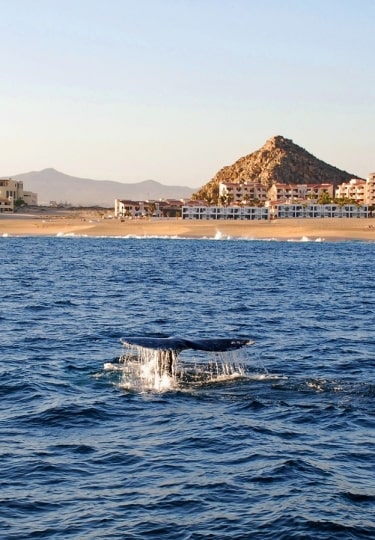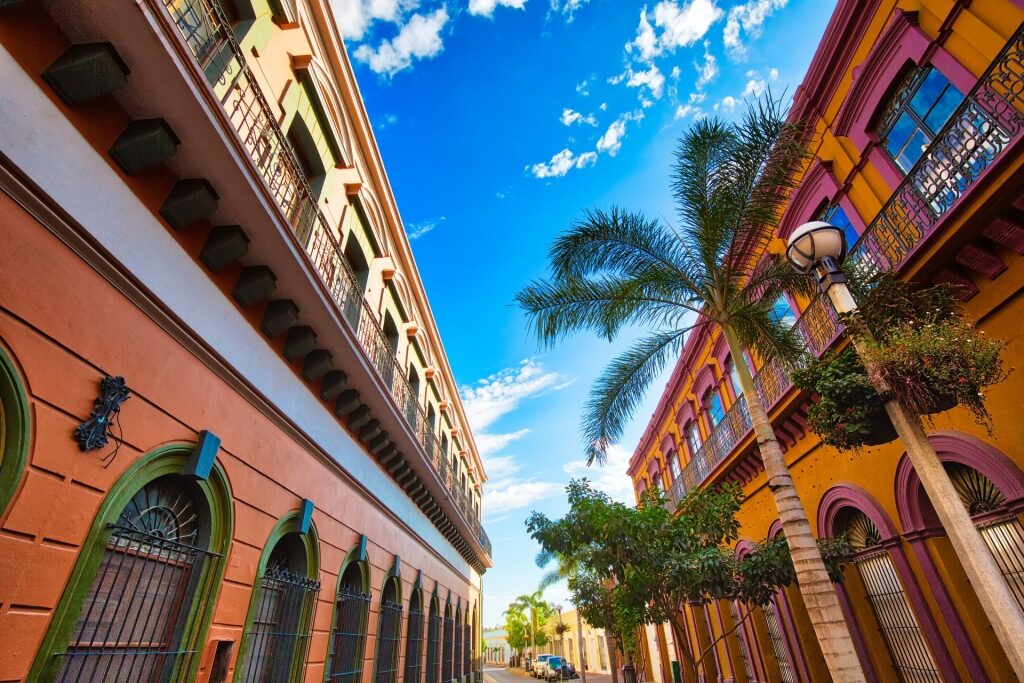Whale watching in Mexico is some of the best in the world, especially on the Pacific Coast, where the cold, deep water creates the perfect habitat for several kinds of whales. Many whales spend their lives migrating north in the summer and south in the winter, and the Baja California Peninsula serves as the southern end of their massive annual visitation.
Grey whales, blue whales, and humpback whales are some of the largest animals on the planet, and fortunately, all three are found in huge numbers off the west coast of North America. If you’re keen to go whale watching in Baja California, you may even see a few other species, like sperm whales, minke whales, or even the occasional orca.
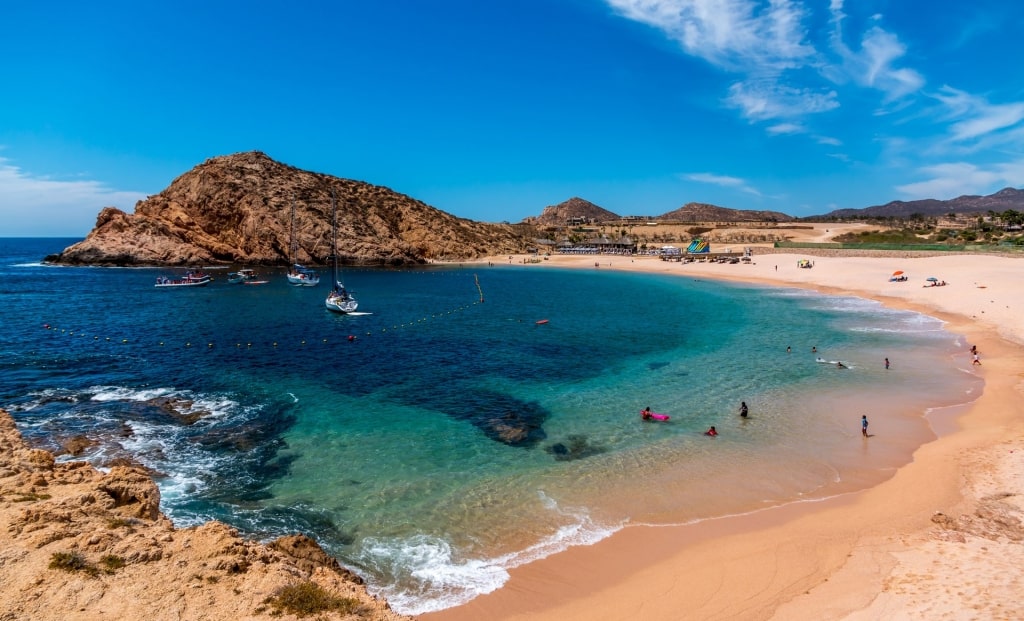
Santa Maria Beach, Cabo San Lucas
Interested in whale watching in Mexico on a future trip? These are some of the must-visit places to whale watch in Baja California.
Banderas Bay, Puerto Vallarta
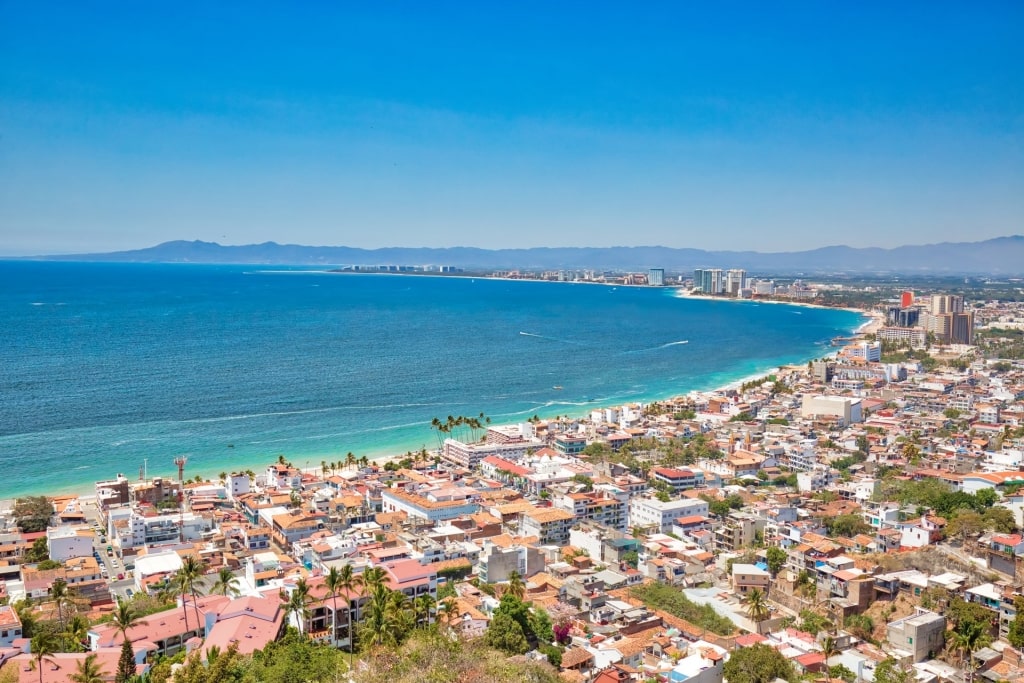
Banderas Bay, Puerto Vallarta
Puerto Vallarta is an extremely popular resort town on Mexico’s west coast with stunning beaches, highly regarded shopping and restaurants, and the beautiful Sierra Madre mountain range not too far from the city. But if it’s whales you’re after, skip the terrestrial activities and head out on Banderas Bay, the winter home of migrating humpback whales.
Read: Best Beaches in Puerto Vallarta
Every year, the whales make the month-or-longer journey to the bay, traveling from as far north as Canada’s British Columbia and the San Juan Islands. There are usually several hundred whales making the trip, as the shape of the bay creates the perfect spot for moms to protect their newborn calves. The whales are generally around the bay from December to March, and babies are born in December and January, so plan on traveling during those months if you want to see moms with calves.
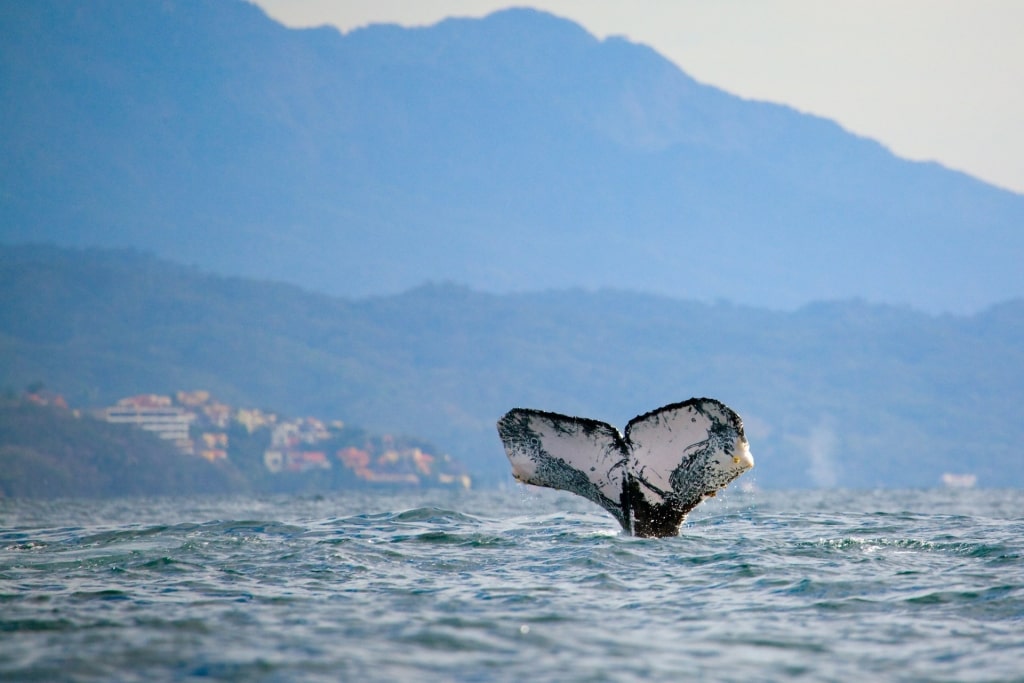
Baja California
The government in the state of Baja California has done an excellent job of ensuring tourists can see the whales without infringing on the whales’ comfort, safety, or natural behaviors. Laws state that there are only a few boats allowed within a certain vicinity of the whales, and if other boats arrive, they must wait until other boats have cleared before approaching the whales. This ensures the whales aren’t stressed or bothered by human observation and can freely display most of their natural behaviors. It’s a lovely spot to see blue whale calves, often within a fin’s reach of their 60-foot-long mothers.
Once you’ve (hopefully) spent the morning with the majestic creatures, there’s plenty to do back on land in Puerto Vallarta without having to travel too far. Nearby is the Hacienda Doña Engracia tequila factory, one of the most popular producers of tequila that Mexico is known for. It’s only a quick drive from the port in Puerto Vallarta and is a great place to taste-test tequilas and learn about the traditional production methods used to make the “nectar of the gods.”
Read: Best Places to Go Whale Watching in the World
Cabo San Lucas
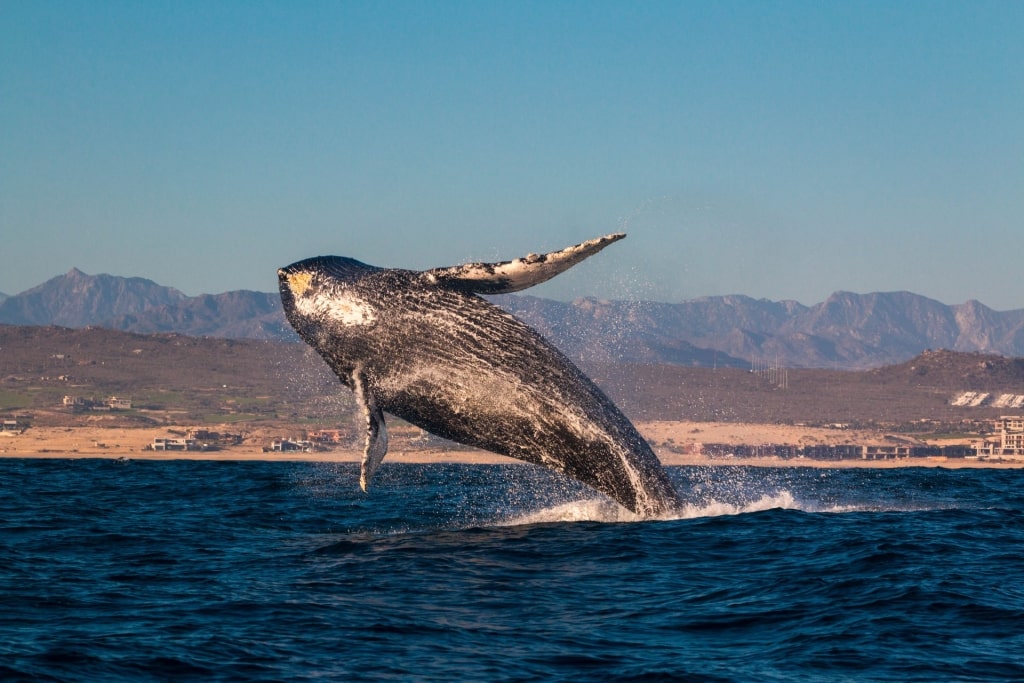
Cabo San Lucas
On the very southern tip of the Baja California peninsula, Cabo San Lucas is a haven for outdoor recreation like snorkeling and fishing. The rock arches just off the coast are some of the most easily recognizable images of Mexico.
As you might expect from Cabo’s geography, it’s one of the best places for whale watching in Mexico. After all, the Sea of Cortez is often called the “world’s aquarium.” If there’s one place where you’re nearly guaranteed to see whales, it’s here.
Whales are often sighted here from December to April. The most commonly seen whales are humpback and greys that come here to give birth in the warm, protected water. It’s also rare (but possible) to see other species like blue whales or sperm whales. They tend to prefer deeper water and be more skittish of boats, but like humpback and grey whales, they do travel to Cabo in the winter. You may even see orcas. Orca pods don’t do a seasonal migration, but they do travel throughout the area in search of food.
Read: Best Place to See Orcas
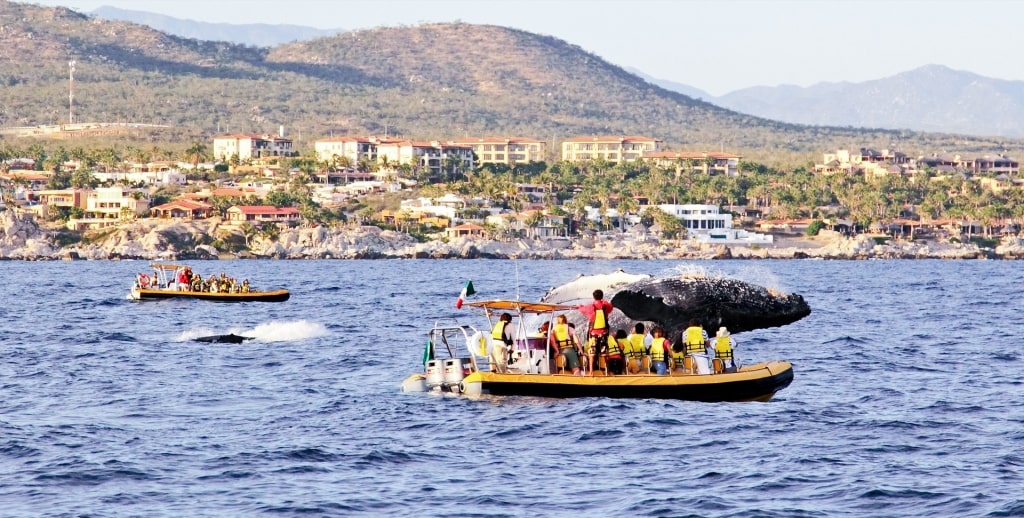
Cabo San Lucas
If you’re up for a little adventure, book a whale-watching tour on a zodiac boat instead of a larger whale-watching vessel. Whale watching in Baja California is even more fun from these small inflatable boats as they move faster and can get much closer to the whales, creating a more exciting and up-close experience. You should definitely expect to get wet, but it’s well worth it to be able to track these amazing creatures up close.
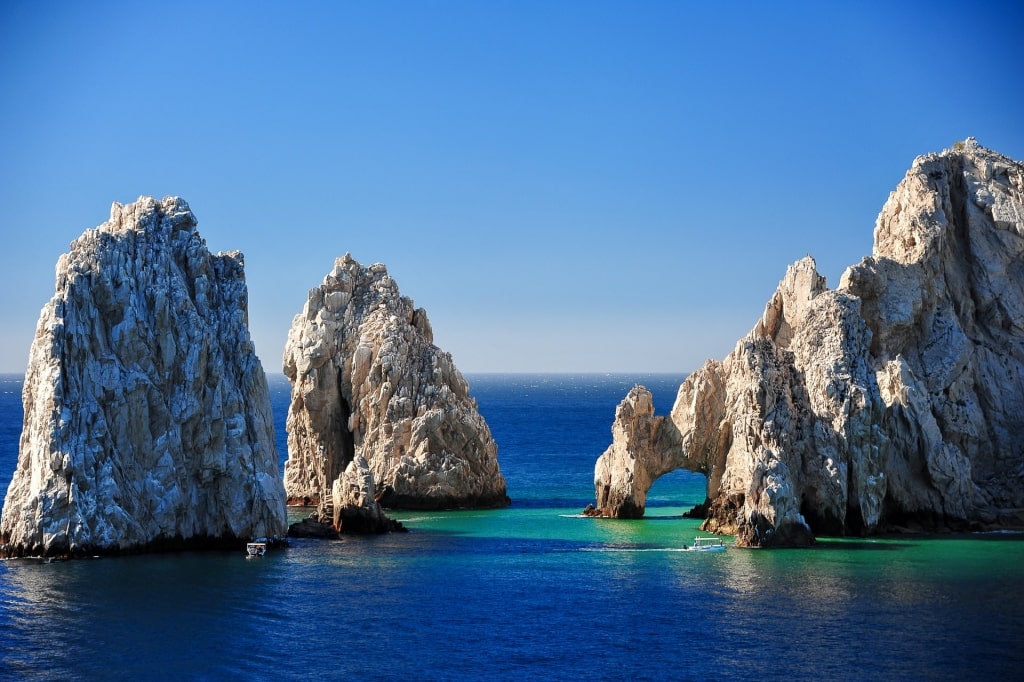
Land’s End, Cabo San Lucas
Another great reason to go whale watching in Baja California is the fact that you’ll likely see far more than just whales. At Land’s End, the famous rock formation on the tip of the Baja peninsula, you’ll find two other well-loved marine species: seals and sea lions. Four species live around Land’s End, including elephant seals, California sea lions, the endangered Guadalupe fur seal, and common seals. For some easy ways to identify each animal, remember that sea lions have external ears, while seals don’t. Elephant seals are massive and have trunk-like protrusions on their noses, while the smaller, furrier looking seals will almost certainly be the Guadalupe fur seals.
If you’re really interested in learning more about whales’ and seals’ lives and habits, consider booking a tour with a naturalist. Travelers interested in marine biology or the animal world will love whale watching in Baja California under the guidance of a knowledgeable professional who can answer any and all questions you’ll have about the animals’ displays and patterns. It’s possible to see whales (and seals and sea lions) playing, breeching, hunting, or displaying defensive behaviors, and a naturalist can really add a new dimension of understanding to what you see in real-time.
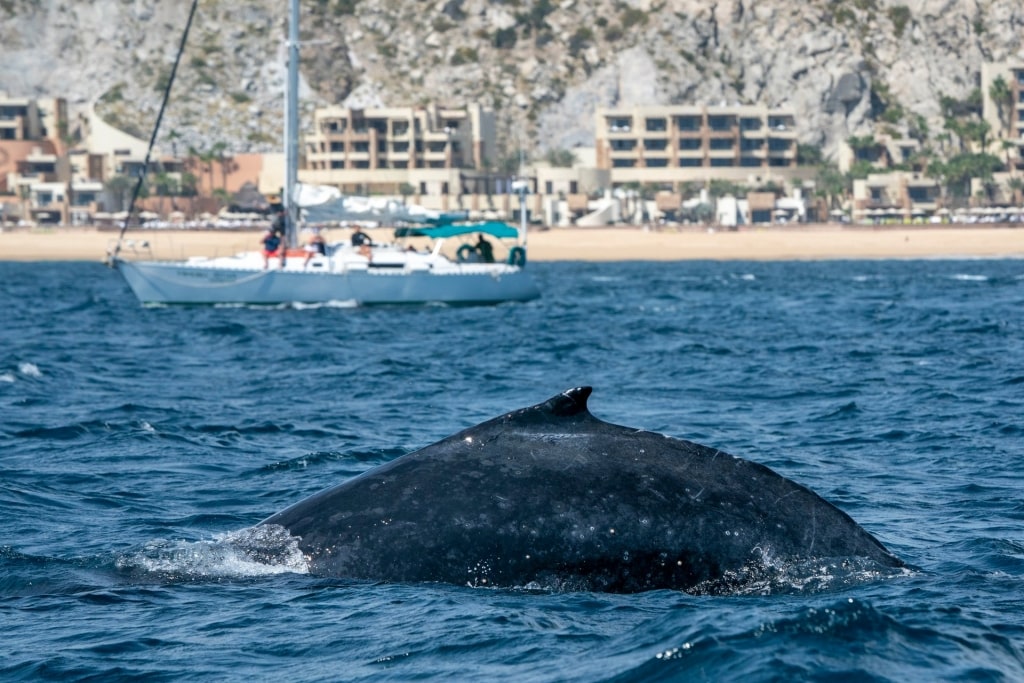
Cabo San Lucas
Whether you choose to go whale watching in Mexico on an adventurous zodiac or opt to sail on a catamaran side-by-side with a naturalist, the chances of seeing whales during winter in Cabo San Lucas are exceptionally high. Be sure to bring a zoom (300mm+ lens) if you have one, or a cell phone in a pinch. If you have an action camera like a GoPro, be sure to set the frame to “linear” rather than “wide,” or the huge whales in your photos will look like dots in the water at best.
Read: Best Beaches in Cabo San Lucas
Todos Santos Island
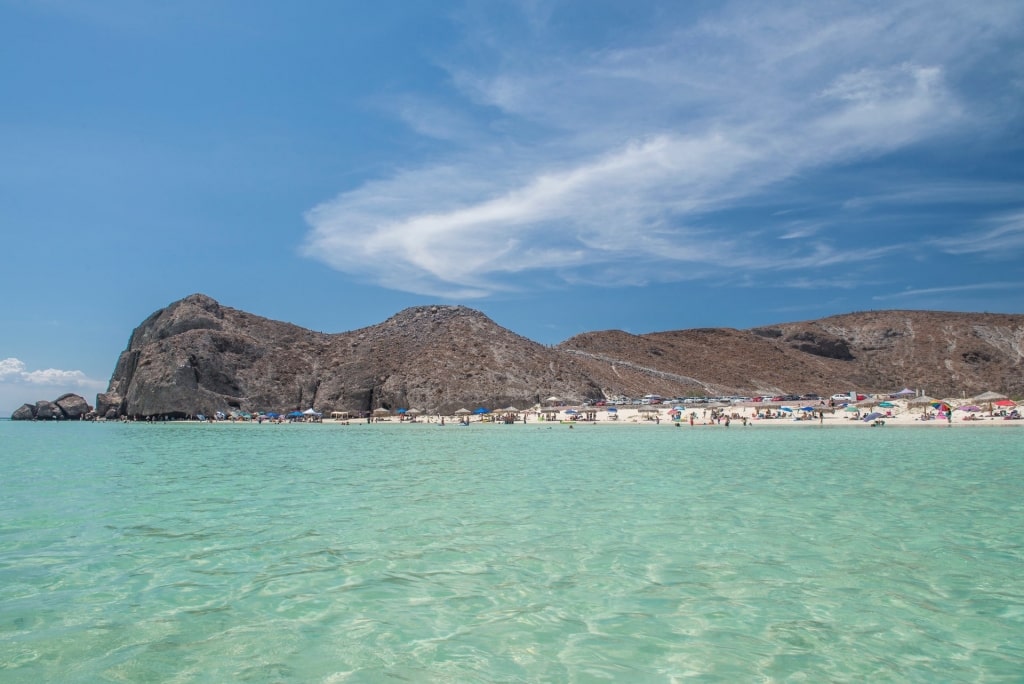
Todos Santos Island
Ensenada, Mexico, has a lot going for it: it’s close to the U.S. and not too far from Mexico’s growing (and fantastic) wine country. It has amazing surfing, great local food, and colorful haciendas and shops in the small towns along the coast. But just off the coast of Ensenada is something far more exciting if you love marine life: Todos Santos Island.
Not to be confused with the charming town of Todos Santos on the mainland, Todos Santos Island (which is actually two islands) isn’t very far off the coast. It’s mostly undeveloped and uninhabited, which makes it an excellent place for snorkeling and scuba diving. Though the water is cold, tour operators always provide wetsuits, and the amazing marine life makes being chilly for a few minutes as you dry off well worth it.
Read: Best Beaches in La Paz, Mexico
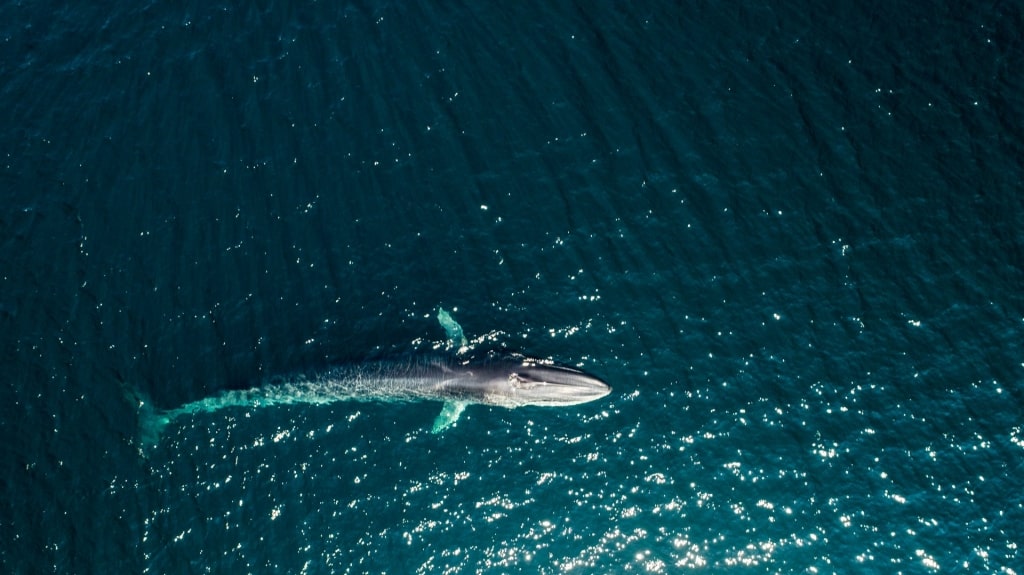
Todos Santos Island
The island is in the middle of the migration routes for most whales, so there’s a good chance of seeing any of the whales sighted along the Pacific Coast. That may include blues, humpbacks, sperm whales, grey whales, small minke whales (still up to 20 feet long), pilot whales, and fin whales, which are the second-longest whale in the world behind blue whales. Some whales, like orcas, are known for being more aggressive, so it’s possible they could be in the area to feed on calves, sea lion pups, and other wildlife.
The fact that so many whales pass near Todos Santos Island while migrating means that if you’re lucky, you may be able to have an underwater whale encounter while diving or snorkeling. The whales are rarely interested in people, but it’s still important to give them plenty of space if you encounter one so they don’t get spooked. They may be huge creatures, but they’re gentle—if you maintain a reasonable distance, they’re more likely to hang around underwater for longer.
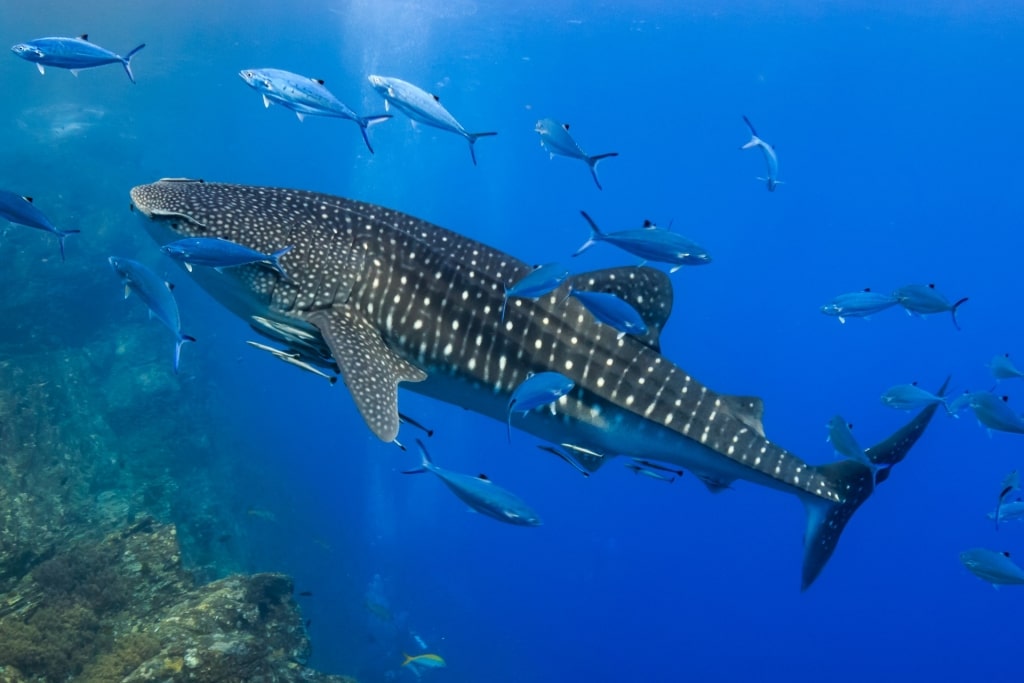
Todos Santos Island
For travelers who really want a unique experience—an experience to top all bucket lists, really—consider a trip to go whale watching in Mexico between August and November. During those months, you might see whale sharks off the coast of Ensenada, and you can actually swim in the water with the gentle giants.
Whale sharks—which are technically sharks—look more like a spotted whale than a shark. They eat plankton and can dive thousands of feet deep, but if you’re in the right place at the right time and have luck on your side, you may be able to swim or dive near one for a few amazing minutes.
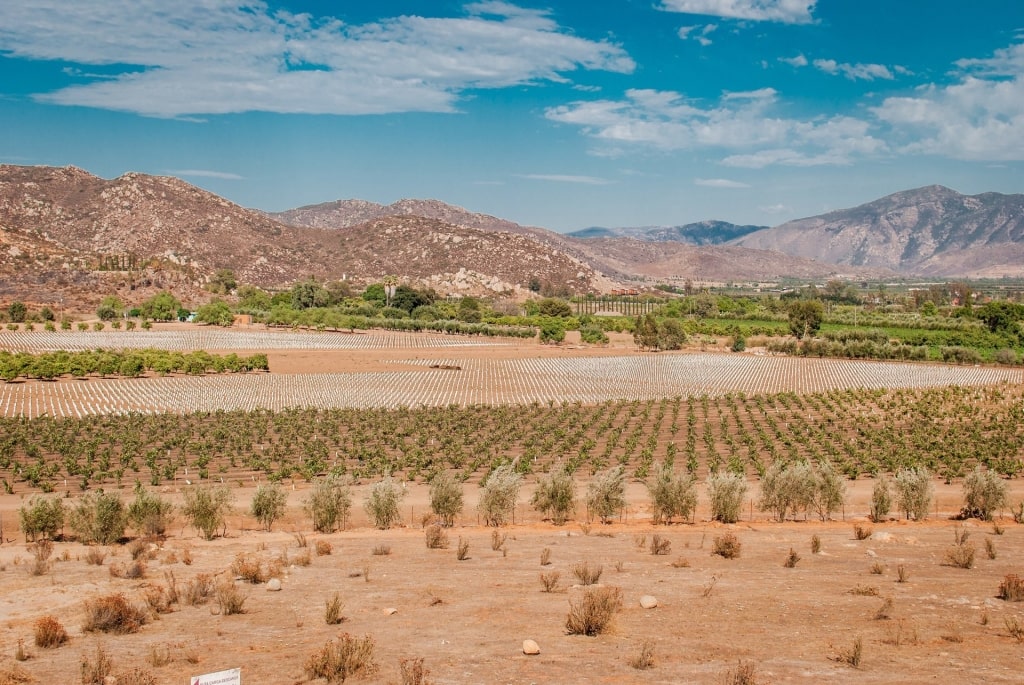
Guadalupe Valley, Ensenada
Fortunately, even if you don’t see whales, there’s still plenty to do on land around Ensenada. There are multiple wineries dotted across the gorgeous Guadalupe Valley, which is Mexico’s largest wine-growing region. If you’re interested in indigenous cultures, plan a visit to the Kumiai Indian Reserve or catch a Mexican Folkloric show on the Pacific Riviera. Some of the best things to do in Ensenada for outdoor enthusiasts include ATV-ing, hiking, and relaxing on the beach.
For many, whale watching in Mexico is a once-in-a-lifetime experience. Mexico’s Pacific Coast is regarded as one of the best places in the world to see whales in the wild.
Read: Mexico Travel Tips
Of course, there’s far more to do in Mexico than just looking for cetaceans. Aside from snorkeling and scuba diving, there are wonderful opportunities to experience authentic food and Mexican culture and traditions throughout the Baja peninsula, and plenty of chances to break a sweat between cliffside hikes, ziplines, and ATV trails.
Explore some of Mexico’s best destinations on a Mexican Riviera cruise. Browse cruise itineraries on our website and book your next incredible vacation today.
